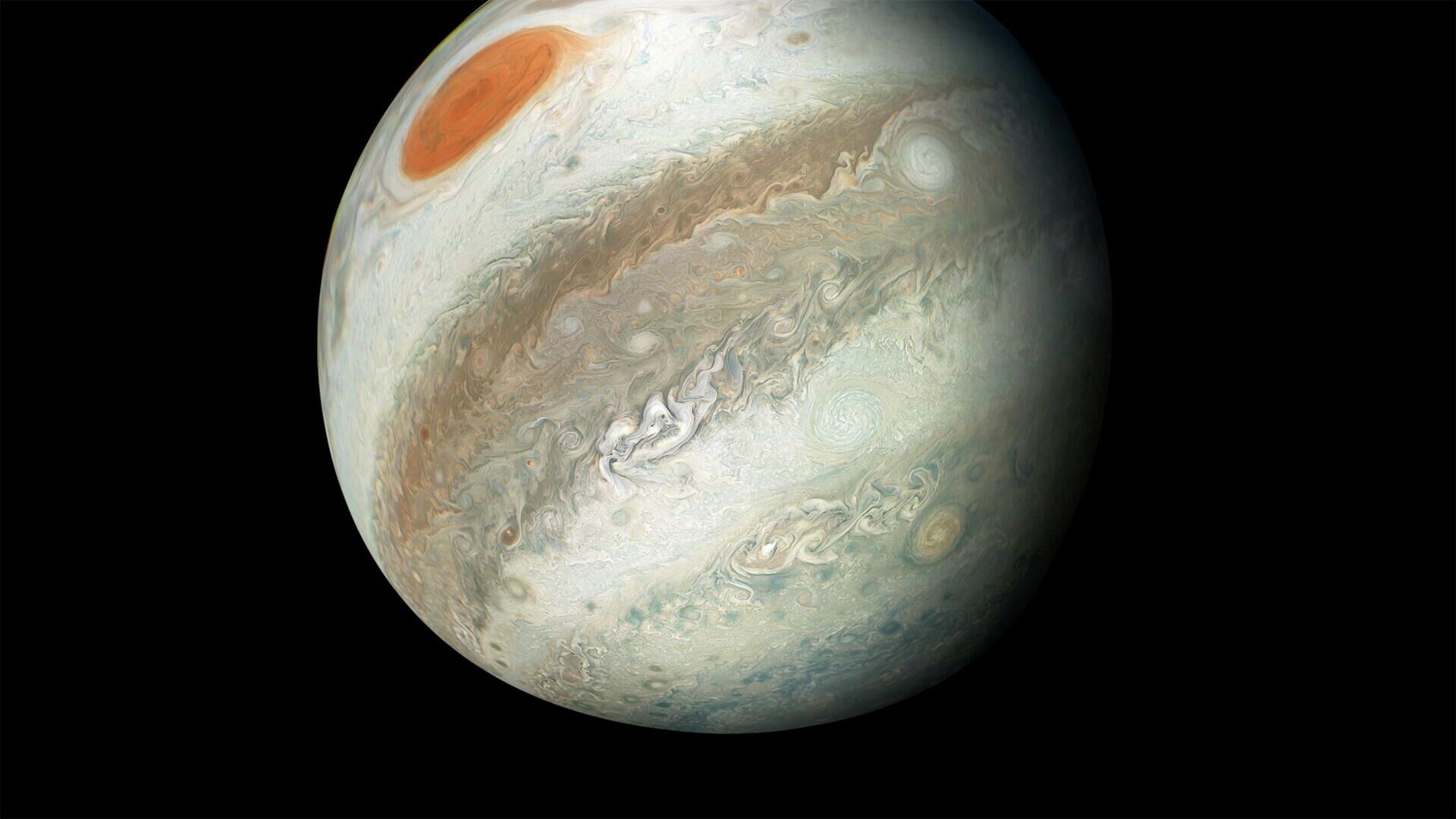https://sputnikglobe.com/20220212/highest-energy-light-ever-detected-from-jupiter-spotted-by-scientists-1092963864.html
Highest-Energy Light Ever Detected From Jupiter Spotted by Scientists
Highest-Energy Light Ever Detected From Jupiter Spotted by Scientists
Sputnik International
The new research has also provided a potential answer to why the Ulysses craft that conducted a flyby of Jupiter in 1992 did not detect any X-rays. 12.02.2022, Sputnik International
2022-02-12T12:59+0000
2022-02-12T12:59+0000
2022-02-12T12:59+0000
science & tech
jupiter
x-rays
light
https://cdn1.img.sputnikglobe.com/img/07e5/0a/1c/1090292284_0:0:1920:1080_1920x0_80_0_0_7db01d9ac8ebd15a810f3e015ea6df2a.jpg
Using NASA's Nuclear Spectroscopic Telescope Array(NuSTAR) space observatory, a team of scientists has managed to detect what appears to be the highest-energy light ever seen on Jupiter, space.com reports.The light, which is X-ray radiation in nature, also seems to be the highest energy light ever seen on any planet in the Solar system, except Earth.As the media outlet points out, this is isn't the first time X-rays have been spotted on Jupiter, as NASA's Chandra X-ray Observatory and ESA's XMM-Newton observatory previously detected X-rays produced by auroras that occur when ions from one of the giant planet's moons, Io, interact with Jupiter's atmosphere.The new study, however, seems to confirm that electrons from Io can cause X-rays even more powerful than those auroras.The new research may also help explain why the Ulysses spacecraft that conducted the flyby of Jupiter in 1992 did not detect any X-rays there: researchers involved in the new study reportedly suggest that the X-rays “become fainter at higher energies”, due to the mechanism that produces them, and were possibly too faint for Ulysses to pick up.
https://sputnikglobe.com/20210401/is-uranus-emitting-x-rays-itself-or-reflecting-those-coming-from-the-sun-1082513046.html
Sputnik International
feedback@sputniknews.com
+74956456601
MIA „Rossiya Segodnya“
2022
News
en_EN
Sputnik International
feedback@sputniknews.com
+74956456601
MIA „Rossiya Segodnya“
Sputnik International
feedback@sputniknews.com
+74956456601
MIA „Rossiya Segodnya“
science & tech, jupiter, x-rays, light
science & tech, jupiter, x-rays, light
Highest-Energy Light Ever Detected From Jupiter Spotted by Scientists
The new research has also provided a potential answer to why the Ulysses craft that conducted a flyby of Jupiter in 1992 did not detect any X-rays.
Using NASA's Nuclear Spectroscopic Telescope Array(NuSTAR) space observatory, a team of scientists has managed to detect what appears to be the highest-energy light ever seen on Jupiter, space.com reports.
The light, which is X-ray radiation in nature, also seems to be the highest energy light ever seen on any planet in the Solar system, except Earth.
As the media outlet points out, this is isn't the first time X-rays have been spotted on Jupiter, as NASA's Chandra X-ray Observatory and ESA's XMM-Newton observatory previously detected X-rays produced by auroras that occur when ions from one of the giant planet's moons, Io, interact with Jupiter's atmosphere.
The new study, however, seems to confirm that electrons from Io can cause X-rays even more powerful than those auroras.
"It's quite challenging for planets to generate X-rays in the range that NuSTAR detects," said Kaya Mori, an astrophysicist at Columbia University and lead author of the new study. "But Jupiter has an enormous magnetic field, and it's spinning very quickly. Those two characteristics mean that the planet's magnetosphere acts like a giant particle accelerator, and that's what makes these higher-energy emissions possible."
The new research may also help explain why the Ulysses spacecraft that conducted the flyby of Jupiter in 1992 did not detect any X-rays there: researchers involved in the new study reportedly suggest that the X-rays “become fainter at higher energies”, due to the mechanism that produces them, and were possibly too faint for Ulysses to pick up.


